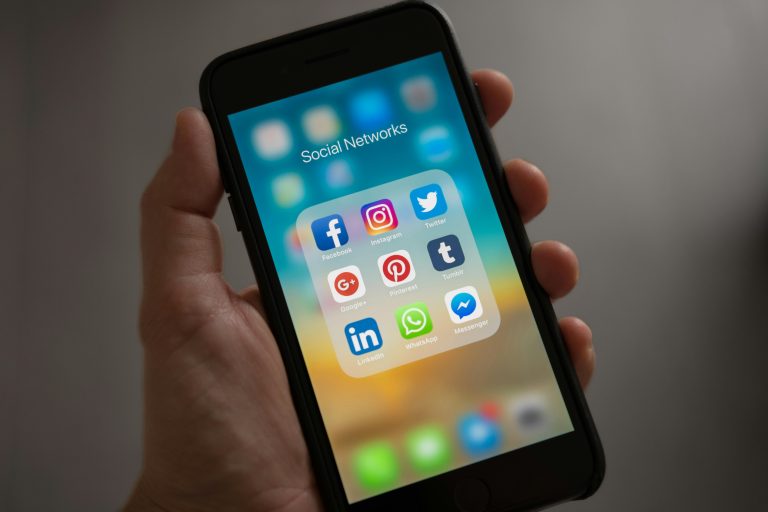Why Are We Lonelier Than Ever in a Hyper-Connected World?
Have you ever felt alone in a crowded room?
Or scrolled through social media for hours only to feel more isolated afterward?
You’re not alone.
Despite living in the most connected era in human history, we’re experiencing what health experts now call a loneliness epidemic.
As someone who’s spent years researching and writing about loneliness, I’ve noticed a troubling pattern: the more digital connections we accumulate, the less meaningful human connection we seem to experience.
This post explores why we’re facing this paradox and what we can do about it.
The Loneliness Paradox: More Connected Yet More Alone
Recent surveys tell a sobering story.
According to the U.S. Surgeon General’s 2023 advisory, nearly half of Americans report experiencing significant loneliness. Similar trends are reported worldwide.
The irony? This surge comes when we have unprecedented technological means to connect.
So what’s going on?
The Hidden Factors Behind Modern Loneliness
Time Poverty: Too Busy to Connect
One of the most significant barriers to meaningful connection is what sociologists call time poverty.
We’re working longer hours, commuting farther, and juggling more responsibilities than previous generations.
Consider these statistics:
- the average American works 47 hours per week;
- 40% of employees work on weekends;
- 86% of employed fathers and 67% of employed mothers report feeling time-poor.
When we’re constantly rushing from one obligation to the next, deep social connections become a luxury we can’t afford.
Coffee dates get postponed, phone calls shortened, and spontaneous gatherings become rare exceptions rather than the norm.
Time poverty doesn’t just limit the quantity of our social interactions, it fundamentally changes their quality.
Meaningful relationships require presence and attention, both of which are casualties of our rushed lifestyles.
Mental Energy: The Invisible Resource
Even when we do have free time, we often lack the mental energy for genuine connection. This concept (what psychologists call ego depletion) helps explain why we might choose passive scrolling over active engagement, even when lonely.
Each decision we make throughout the day depletes our mental energy reserves. By evening, when many social opportunities arise, we’re running on empty. The path of least resistance becomes Netflix or social media rather than engaging conversations that require emotional investment.
Dr. Roy Baumeister’s research on willpower shows that meaningful social interaction requires self-regulation: the same mental resource depleted by work stress, decision fatigue, and information overload. When this resource is exhausted, we default to passive consumption rather than active connection.
I’ve noticed this pattern in my own life. After a mentally demanding day, a text from a friend feeling “I’m too drained to talk” makes perfect sense, even though meaningful connection might be exactly what both of us need.
The Illusion of Digital Connection
Social media promised to bring us closer together, but research increasingly suggests it’s driving us apart.
I’m sure you can feel this too. The platforms designed to connect us often leave us feeling more isolated and inadequate.
Social media creates an illusion of connection while frequently delivering the opposite:
- Passive consumption replaces active engagement: scrolling through updates about others’ lives differs fundamentally from sharing experiences together;
- Quality sacrificed for quantity: we’ve traded deep conversations for Likes and Comments. The average person has hundreds of online connections but fewer close confidants than people did thirty years ago;
- The highlight reel effect: we compare our behind-the-scenes reality to others’ carefully curated highlight reels, fostering feelings of inadequacy and FOMO (fear of missing out).
As one of my readers poignantly shared:
“I have 1,286 Facebook friends but no one to call when my car breaks down.”
The AI Companion Effect
Perhaps the most recent development in our loneliness story is the rise of AI companions.
With sophisticated AI like ChatGPT and others becoming increasingly human-like, many people are turning to artificial relationships to fill their social needs.
These AI relationships offer compelling advantages:
- 24/7 availability;
- no judgment or rejection;
- conversations tailored to your interests;
- no reciprocity required.
Unlike human relationships, which require investment, compromise, and vulnerability, AI companions ask nothing in return. They’re designed to adapt to us, not challenge us to grow.
The concern isn’t that people are talking to AI, it’s that these frictionless interactions may gradually erode our tolerance for the natural friction of human relationships.
When I can have a perfect conversation with an AI that never interrupts, disagrees awkwardly, or needs emotional support, why invest in messy human connections?
Research on this phenomenon is still emerging, but early studies on human-AI relationships suggest we may be developing emotional attachments to AI that compete with our human connections.
Physical Spaces: Designed for Isolation
Modern urban design often works against human connection.
Many neighborhoods and cities are built for efficiency and commerce rather than community and conversation.
Consider how these physical realities shape our social lives:
- lengthy commutes reduce time for community involvement;
- single-person households are at an all-time high;
- public spaces increasingly require purchases to occupy;
- remote work eliminates casual office interactions.
If you move from a walkable neighborhood with front porches to a suburb where everyone drives straight into their garage, your spontaneous interactions with neighbors can drop to zero.
Our physical environment shapes our social possibilities more than we realize.
The Health Implications of Chronic Loneliness
This isn’t just about feeling sad occasionally.
Chronic loneliness has profound health consequences:
- increases mortality risk by 26% (comparable to smoking);
- it’s associated with higher rates of depression and anxiety;
- it correlates with increased risk of heart disease and stroke;
- it can accelerate cognitive decline and dementia.
The U.S. Surgeon General has declared loneliness a public health crisis, noting that its health impact rivals obesity and addiction.
Reclaiming Authentic Connection: Practical Steps
Despite these challenges, I remain optimistic.
Humans are fundamentally social creatures, and our desire for connection remains strong.
Here are practical steps I’ve found helpful:
1. Budget Time for Connection
Just as we budget money, we need to budget time for relationships.
This means:
- scheduling regular unplugged time with loved ones;
- treating social commitments as important as work meetings;
- creating rituals that prioritize connection (Sunday dinners, morning walks).
I’ve found that adding connection blocks to my calendar (protected time for relationships) has been transformative.
2. Create Digital Boundaries
Our devices are designed to capture attention, not foster connection. Reclaiming control means:
- designating tech-free times and spaces;
- using apps that limit social media use;
- turning off non-essential notifications;
- practicing “tech Sabbaths” (regular breaks from screens).
The difference in my mental state between scrolling before bed versus reading a physical book is remarkable.
3. Invest in Fewer, Deeper Relationships
Quality beats quantity when it comes to fighting loneliness.
Research shows that a few close relationships contribute more to well-being than many casual ones.
Focus on nurturing your vital few: those relationships that energize rather than deplete you.
This might mean:
- regular check-ins with close friends;
- vulnerability and honesty about your needs;
- prioritizing in-person connection when possible.
4. Join Communities Based on Shared Interests
Structured activities create natural opportunities for connection without the pressure of pure socializing.
Consider:
- volunteer organizations;
- sports teams or fitness groups;
- book clubs or craft circles;
- religious or spiritual communities.
The key is regular meetings around shared purposes: what sociologists call third places (not home, not work).
5. Practice Connection Skills
Meaningful connection is a skill that requires practice:
- active listening without planning your response;
- asking curious questions rather than waiting to speak;
- expressing genuine appreciation;
- being comfortable with silence.
These skills may feel awkward at first but they improve with practice.
Reconnecting in a Distracted World
The loneliness epidemic didn’t happen overnight, and solving it won’t be quick or easy.
But recognizing the invisible barriers to connection is the first step toward overcoming them.
What I’ve learned through years of studying loneliness is that connection rarely happens accidentally in today’s world. It requires intentionality, effort, and sometimes discomfort. The paradox is that these “costs” of connection yield returns that far outweigh the investment.
As we navigate this hyper-connected yet often isolating world, perhaps the most important question we can ask is: Am I using technology to supplement human connection or substitute for it?
I’d love to hear your thoughts and experiences. How do you maintain meaningful connections in a busy, distracted world? Tell me more: addie {at} anonymousfriend.co 📩




